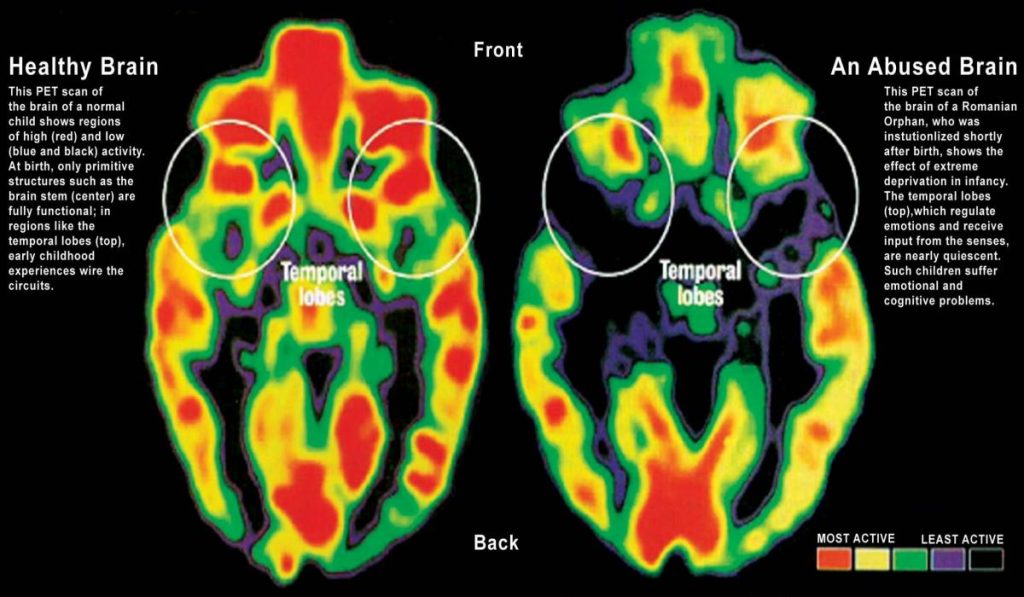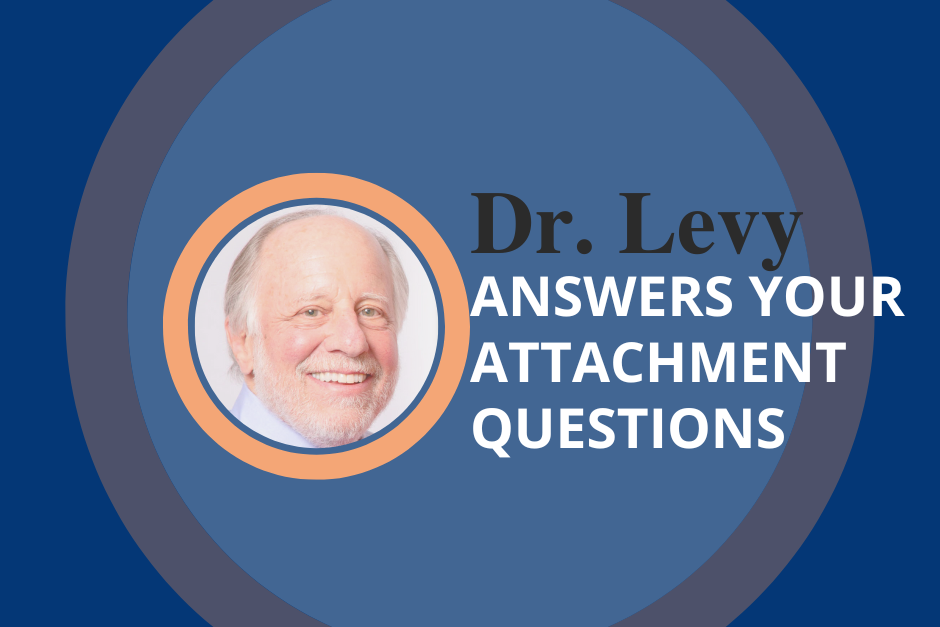Each month, Dr. Levy answers a common question he has received from professionals, caregivers and parents during three decades of pioneering work on attachment theory, treatment and training.
Q. How do early attachment relationships impact the brain?
A. As researchers have gained a deeper understanding of neurobiology, they have learned that relationships shape the developing brain even in the womb — and they continue to affect the brain’s wiring throughout childhood and into adulthood.
Brain development begins two weeks after conception and continues most rapidly during the first three years of life. Studies show that prenatal stress experienced by the mother produces increased norepinephrine (arousal and agitation) and decreased levels of dopamine and serotonin for the child. These are linked to future depression, anxiety and emotional dysregulation Once the child is born and in early childhood, attachment experiences significantly influence brain development. The baby’s brain relies on sensitive and attuned care from attachment figures for healthy growth and functioning. Chronic stress associated with a lack of safe and secure attachment can impair the formation of brain circuits and alter levels of stress hormones (cortisol, dopamine, serotonin, epinephrine, norepinephrine), resulting in emotional and biological dysregulation, anxiety, and depression.

Unpacking the Limbic System
The limbic system is the social and emotional part of the brain, governing attachment, nurturing instincts, learning, implicit memory (preverbal, unconscious), motivation, stress response, and the immune system. The circuits of the limbic brain are wired together almost entirely by attachment experiences, and are altered by stress and trauma. In other words, the neurons of the limbic regions are genetically programmed to connect with one another via early child–caregiver interactions.
The primary structures of the limbic system are:
• Amygdala: Regulating emotion, learning, memory, interpreting facial expressions, and fear conditioning, it serves as an “alarm bell” activated by threatening and frightening experiences. It is programmed to respond to fear and potential threat. It is where implicit memory is created and stored, in utero and during the first 18 months of life.
• Hippocampus: This organizes explicit memory, in concert with the cerebral cortex, which allows us to remember facts and autobiographical events consciously. By around age 2, a child is learning language, has conscious awareness, and can remember a specific past event. The hippocampus is also vital to retrieving information encoded in the past; it can become impaired due to chronic stress, which can affect the ability to accurately remember.
• Hypothalamus: Interacting with the pituitary, it regulates the autonomic nervous system and neuroendocrine system by releasing hormones and neurotransmitters, such as oxytocin (the bonding chemical). It regulates primal drives and functions, including hunger, sexual arousal, blood pressure, heart rate, thirst, and the sleep–wake cycle.
• Middle prefrontal regions: Located at the intersection of the brain stem, limbic system, and cortex, they include the anterior cingulate, orbitofrontal cortex, cingulate gyrus, and the prefrontal cortex. These structures play a key role in modulating attention, self-regulation, awareness, and the integration of cognitive and emotional information.
• Thalamus: A major relay station to the cerebral cortex, it sends signals to the brain stem to stimulate the release of norepinephrine throughout the brain, resulting in alertness and arousal.
Babies are right-hemisphere dominant, responding primarily to preverbal and nonverbal emotional communication—facial expressions, mutual gaze, touch, tone of voice, and in-arms security and safety. The infant’s right brain and the attachment figure’s right brain are in-synch and attuned during moments of loving and safe connection. This limbic resonance is the fundamental building block of secure attachment and leads to the child’s ability to self-regulate and to the formation of the child’s core beliefs about him or herself.
Early experiences of secure or insecure attachment are encoded into the implicit (preverbal and unconscious) memory systems in the limbic brain and become mindsets and expectations that guide subsequent behavior.
Brains can, however, be rewired. Early neglect or trauma experiences don’t have to can be healed. Through healing parenting and therapeutic support, a child with an attachment disorder can develop close, trusting and loving relationships long after those first three years. The ability to self-regulate and build positive core beliefs can be learned. Contact Evergreen Psychotherapy Center to learn more.
Previous articles addressed questions about the Seven Functions of Secure Attachment, the Dependency Paradox, the importance of talking about trauma, the First Year Attachment Cycle, traits of successful and healthy adult relationships, the importance of hope as a part of treatment for trauma, the core concepts of child development, parenting strategies for deescalating conflict and the importance of touch to fostering attachment.


